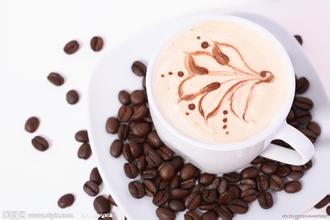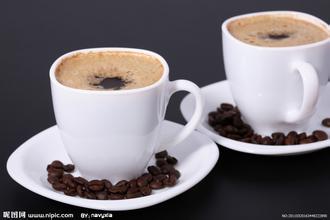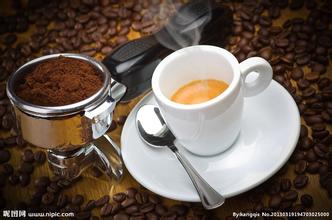Introduction to the export and sales of coffee beans in Mexico
In recent years, the international community has increasingly recognized that Mexican coffee is of high quality. Now, the Mexican Coffee Association also wants to take this opportunity, together with the SCAA annual meeting held in Anaheim in May this year, to promote their brand new Logo and claim that they are about to launch a certification plan.
The new Logo of Mexican Coffee, which uses bright pink, blue and yellow, plus a strong colonial pottery totem, is a far cry from the Colombian Logo (coffee farmer Juan Valdez and his mule), but this Logo is as eye-catching and enjoyable as the latter.
In addition, the entire Mexican coffee industry also hopes that through this coffee bean logo with bright colors, it can be recognized by the world as the logo of fine coffee in the future, and it is also hoped that both the international boutique coffee market and ordinary consumers can recognize it in this way.
Roberto Giesemann, executive director of the Mexican Coffee Association, said: "whether you are an ordinary consumer or an importer, once you see this logo, you can pay attention to buy high-quality coffee beans with guaranteed quality, because these coffee beans must go through strict quality checks and pass testing before you can add this logo. "
Giesemann began to work on Mexico's boutique coffee transformation program a year ago. In the earlier era of the Mexican Fine Coffee Association (also known as Calicafe), his efforts have made buyers and importers everywhere once again deeply recognize the boutique status of Mexican coffee.
However, it is still a difficult road to maintain the stability of fine coffee quality. at present, only a few countries (such as Colombia) can claim loudly that their coffee is recognized by the world as fine coffee, because they have a model of Juan Valdez driving quality control.
Giesemann added: "at present, the primary goal of the Mexican Coffee Association is to implement certification, although the plan has been officially proposed by the authorities, but the actual implementation still requires continuous efforts. "
"We have enthusiasm, formal regulations and a plan, and now is the time to carry out this plan! In order to achieve strict quality control, we have set up many standard cup testing rooms in Mexico, and we have just completed the cup testing room at the headquarters of the Coffee Association of Mexico. "
The certification program is also backed by a decree signed by the head of state, which explicitly requires all coffee exporters to pick 5% of the lowest quality beans from their existing coffee beans, including defective beans that are incomplete, blackened, immature and improperly fermented, which are usually used to make instant coffee.
"We must improve the international image of Mexican coffee," Giesemann said hand in hand with its team promoting the boutique coffee certification program. Their goal is to increase domestic consumption at least twice as much.
Mexico originally uses 0.743 kilograms of coffee beans per person, and they will raise it to 1.5kg per person within four years, plus the federal government subsidizes the purchase of coffee beans worth about $18 million to $19 million. As a result, Mexico's domestic coffee consumption will increase from 13 million bags to 26 million bags.
Giesemann recently focused on advertising boutique coffee and educational promotion videos on major Mexican television stations, saying: "it is a very difficult task to increase coffee consumption per person, which is why we have set a target of 1.5kg per person within four years. He hopes that through these colorful TV commercials, many Mexicans who are addicted to Coca-Cola can switch to coffee.

Important Notice :
前街咖啡 FrontStreet Coffee has moved to new addredd:
FrontStreet Coffee Address: 315,Donghua East Road,GuangZhou
Tel:020 38364473
- Prev

Unique quality Ecuadorian Coffee introduces San Cristobal producing area
When Thomas and the crew landed on the island, they were frantically looking for water and were so thirsty that they squeezed juice from the fat leaves of the cactus to drink. At last a source of water was found in a rocky gully. Thomas attributed it to the gift of God, because it was good Friday, and they had piously celebrated mass before they set out in search of water. But Thomas will never
- Next

Introduction to Dominican coffee with a mellow taste and moderately bright sour taste
Coffee in Dominica is grown in highlands and lowlands, and its taste is slightly different. The upland is sour, but the taste is rich; the lowland is less sour and tastes smoother. Boutique coffee has become popular in recent years. High-quality coffee beans produced by some Dominican estates have a rich aroma, mellow taste and moderately bright sour taste, and have been bought with the more famous Puerto Rico beans or teeth.
Related
- Does Rose Summer choose Blue, Green or Red? Detailed explanation of Rose Summer Coffee plots and Classification in Panamanian Jade Manor
- What is the difference between the origin, producing area, processing plant, cooperative and manor of coffee beans?
- How fine does the espresso powder fit? how to grind the espresso?
- Sca coffee roasting degree color card coffee roasting degree 8 roasting color values what do you mean?
- The practice of lattes: how to make lattes at home
- Introduction to Indonesian Fine Coffee beans-- Java Coffee producing area of Indonesian Arabica Coffee
- How much will the flavor of light and medium roasted rose summer be expressed? What baking level is rose summer suitable for?
- Introduction to the characteristics of washing, sun-drying or wet-planing coffee commonly used in Mantenin, Indonesia
- Price characteristics of Arabica Coffee Bean Starbucks introduction to Manning Coffee Bean Taste producing area Variety Manor
- What is the authentic Yega flavor? What are the flavor characteristics of the really excellent Yejasuffi coffee beans?

